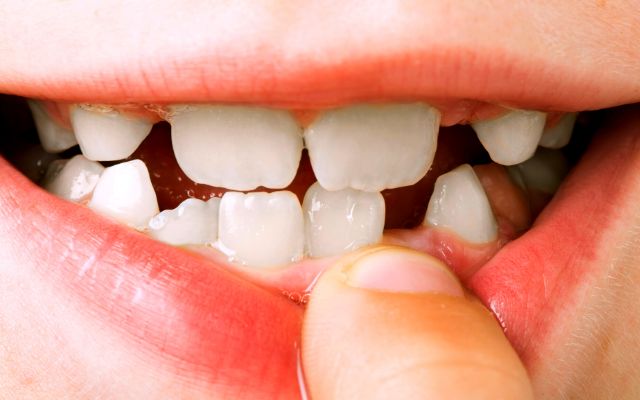Snag Tooth: Several factors can cause a child to develop a snaggle tooth, the most prevalent of which are as there is insufficient space in the mouth, the tooth has been dislodged. You can get more knowledge about the causes, signals as well as ways to prevent snagging tooth and more from our Bassendean dentist below.
Let’s get started!
What Is Snag Tooth?


SnaggleTooth is a name used to explain the appearance of teeth that are misaligned and have a distinct path between them. Typically, Snaggle Tooth is used to describe a person’s canine or “fang” teeth. However it can also refer to any misaligned teeth in the mouth.
A person can have a snag tooth at any point in their lifetime. In certain cases, it may have been present from childhood due to genetic causes or practices like thumb-sucking or chronic pacifier use. In some circumstances, it may develop later in life due to trauma, tooth decay, or alterations in the jaw or tooth anatomy.
Orthodontic treatment, like braces or clear aligners, may be used to address snaggle teeth in some circumstances.
In other instances, though, it may be a cosmetic issue that does not impair the health or function of the teeth, and the individual may want to leave it alone. The choice to fix snaggle teeth is ultimately a personal one that should be made in collaboration with a dentist or orthodontist.
Some Causes of Snaggle Tooth
There are numerous causes of snaggle teeth, such as:
- Snaggle tooth trait can be inherited from either parent. If a person has a history of crooked teeth or other dental problems in their family, they may be more susceptible to acquire snaggle tooth.
- Thumb-sucking: Extended thumb-sucking or pacifier use can exert pressure on the teeth and jaw, causing them to shift out of position and create a snaggle tooth.
- Mouth breathing: Mouth breathing, as opposed to nasal breathing, can alter the position of the teeth and jaw, resulting in a snaggle tooth.
- Tooth loss can cause adjacent teeth to shift, causing gaps and voids that can contribute to a snaggle tooth.
- Damage to the teeth or jaw might cause them to shift out of position, resulting in crooked teeth.
- Pressing the tongue on the teeth can exert pressure on them and cause them to shift, resulting in a snaggle tooth.
- Malocclusion, in which the teeth are not properly aligned, can generate a snaggle tooth.
It is vital to contact a dentist or orthodontist to discover the reason and possible treatment options for a snaggle tooth.
What are the symptoms of Snag Tooth?


Snaggle tooth is not a medical disease, but rather a phrase used to describe teeth that are crooked, misaligned, or protrude unevenly or jaggedly from the mouth. Nonetheless, the following symptoms may be connected with snaggle tooth:
- Dissatisfaction with the appearance of the teeth is one of the most prevalent symptoms of snaggle teeth. Misaligned or crooked teeth can damage a person’s confidence and self-esteem.
- Sometimes, snaggle teeth can make it difficult to chew or bite, particularly if the teeth overlap or get in the way of one another.
- In some circumstances, snaggle teeth can impact speech, producing lisping or trouble pronouncing specific words.
- Oral health issues: Snaggle teeth can make it difficult to properly clean teeth, hence increasing the risk of cavities, periodontal disease, and other oral health issues.
If a person is experiencing any of these symptoms, he or she should contact a dentist or orthodontist to establish the underlying reason and available treatment options.
What are the consequences of Snag Tooth?
Despite the fact that a snag tooth is not a medical issue, it can result in a number of implications that can negatively impact a person’s dental health and quality of life. Here are several probable outcomes of snag tooth:
Difficulty cleaning teeth
Crooked or misaligned teeth can make it difficult to clean all surfaces of the teeth, which can raise the risk of tooth decay, gum disease, and other oral health issues.
Speech difficulties
In some situations, a snag tooth might impair a person’s ability to talk correctly, resulting in a lisp or other speech problems.
Chewing and digestion problems
Problems with chewing and digestion: Misaligned or projecting teeth can make it difficult to properly chew food, which can contribute to digestive issues.
Self-esteem issues
Many persons with snag teeth may feel self-conscious about their looks, which can damage their self-esteem and confidence in social settings.
Increased risk of injury
Teeth that protrude or are misaligned may be more susceptible to harm, such as chipping or cracking, particularly during vigorous exercise.
If left untreated, snagging teeth can result in long-term dental health issues and a reduction in quality of life. It is essential to consult a dentist or orthodontist in order to determine the reason for a snag tooth and the available treatment options.
Snag Tooth Treatment


The therapy for snag tooth is dependent on the severity of the misalignment and the underlying cause of the problem. Following are some typical therapy choices:
- In orthodontic treatment, braces, clear aligners, and other orthodontic devices can be used to progressively shift the teeth into the proper position. This is frequently the most effective therapy for moderate to severe snag tooth.
- In some instances, dental restorations such as veneers or crowns can be utilized to enhance the appearance of teeth without relocating them.
- In severe cases in which a tooth is causing substantial crowding or misalignment, it may be essential to extract the tooth in order to allow the other teeth to shift into a more aligned position.
- In rare instances, surgery may be required to rectify the alignment of the jaw or teeth.
The optimal course of therapy will depend on a variety of criteria, such as the reason and degree of the misalignment, the patient’s age and oral health, and their own preferences. It is essential to see a dentist or orthodontist in order to discover the optimal treatment approach for your unique case.
Prevention for Snaggle Tooth
Although some cases of snaggle tooth are inherited or caused by other unavoidable circumstances, there are steps that can be taken to lessen the likelihood of acquiring misaligned or projecting teeth:
Excellent oral hygiene
Following good oral hygiene practices, such as brushing twice a day, flossing daily, and visiting the dentist regularly for cleanings and checkups. They will help keep teeth healthy and prevent tooth decay and gum disease, which can result in misalignment.
Prevent thumb-sucking
Extended thumb-sucking or pacifier use can exert pressure on the teeth and jaw, causing them to shift out of alignment and resulting in snaggle teeth. Encouragement of children to cease sucking their thumbs or using pacifiers can help avert this problem.
Treat mouth breathing
Mouth breathing can alter the position of the teeth and jaw, resulting in a snaggle tooth. Addressing underlying causes of mouth breathing, such as allergies or sinus difficulties, can help prevent this issue.
Employ protective equipment during physical activity
Using a mouthguard during sports or other strenuous activities can avoid tooth injuries that can lead to misalignment or protrusion.
If a child or adult exhibits signs of misaligned or projecting teeth, seeking early treatment from a dentist or orthodontist can prevent the problem from worsening and make treatment easier and more effective.
It may be able to lessen the likelihood of acquiring a snaggle tooth or other dental issues by adopting these measures.
Snaggle Tooth and Dental Checkups at Spring Orchid Dental


There is a strong connection between snaggle tooth and dental checkups at Spring Orchid dental. Here are some points to consider:
Early Detection
Dental checkups at Spring Orchid Dental can help in detecting snaggle tooth at an early stage. Regular dental visits ensure that any dental issue is identified and treated before it gets worse. Early detection and treatment of snaggle tooth can prevent the need for more invasive and costly treatments in the future.
Professional Advice
During dental checkups, the dentists at Spring Orchid Dental can provide professional advice on how to prevent snaggle tooth. They can advise on the right brushing techniques, flossing methods, and diet choices that can help prevent tooth misalignment.
Customized Treatment
In the event that a patient has snaggle tooth, Spring Orchid Dental can provide customized treatment options to correct it. The dentist will assess the severity of the condition and recommend the appropriate treatment, which may include braces, aligners, retainers, or surgery.
Monitoring Progress
Patients with snaggle tooth who undergo treatment at Spring Orchid Dental will need regular checkups to monitor their progress. This ensures that the treatment is working effectively and that any issues are identified and addressed promptly.
Contact Our Team
Regular checkups at Spring Orchid Dental are crucial for preventing, detecting, and treating snaggle tooth. We offer patients professional advice, customized treatment, and ongoing monitoring to maintain optimal oral health.
FAQs
How long does it take to treat a snag tooth?
The duration of therapy for a snag tooth varies on the severity of the misalignment and the treatment method employed. Typically, treatment with braces or clear aligners takes between one and three years, whereas dental restorations can be completed in less time.
Is it necessary to treat Snaggle Tooth?
Actually, snaggle teeth don’t always have to be repaired. But taking care of them can make your teeth look better and lower the risk of oral health problems.
Can adults get Snaggle Tooth?
Yes, adults can get Snaggle Tooth. In fact, some adults may develop Snaggle Teeth later in life due to jaw changes or tooth loss.





